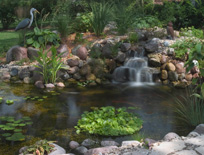ARTICLES
Advance Search
Aquatic Health
Aquatic Health, Fitness & Safety
Around the Internet
Aquatic Culture
Aquatic Technology
Artful Endeavors
Celebrity Corner
Life Aquatic
Must-See Watershapes
People with Cameras
Watershapes in the Headlines
Art/Architectural History
Book & Media Reviews
Commentaries, Interviews & Profiles
Concrete Science
Environment
Fountains
Geotechnical
Join the Dialogue
Landscape, Plants, Hardscape & Decks
Lighter Side
Ripples
Test Your Knowledge
The Aquatic Quiz
Other Waterfeatures (from birdbaths to lakes)
Outdoor Living, Fire Features, Amenities & Lighting
Plants
Ponds, Streams & Waterfalls
Pools & Spas
Professional Watershaping
Structures (Editor's Notes)
Travelogues & History
Water Chemistry
WaterShapes TV
WaterShapes World Blog
Web Links
Around the Internet
Aquatic Culture
Aquatic Technology
Artful Endeavors
Celebrity Corner
Life Aquatic
Must-See Watershapes
People with Cameras
Watershapes in the Headlines
Last year was the worst I’ve endured since I was a novice in the pool and spa industry. At the time, I found myself taking comfort in the fact that I wasn’t alone, that the recession was to blame for my ebbing sales and that we were all in the same boat. Misery, it seems, loved company. But I snapped out of it late last year. I now believe (as I should have last year) that when you constantly tell yourself things are bad, you almost ensure that they will be that way and stay that way. What I did to escape the trap was to
I’ve come to the world of watershaping from a different perspective. Back in the 1960s, I worked for a company that built poured-in-place concrete homes in Florida. Right from the beginning, I couldn’t help noticing the importance of waterproofing in the performance of these structures – or the consequences of not taking the potential for water intrusion seriously. My interest in this subject took on new significance in 1989, when I formed a Florida firm that conducted forensic analyses in all manner of structural failures as a service to
When my family started in the pool and spa service business some 25 years ago, it didn’t take us long to recognize that there was very little available to us by way of education about water chemistry – or, for that matter, about most of the other skills involved in maintaining pools, spas and other waterfeatures. That didn’t make much sense to us, even then. After all, how could an industry devoted to the health, safety and comfort of millions of people function without addressing the need for standardized approaches to water maintenance or
As I see it, watershaping is an activity in which multiple disciplines come together to design, engineer and construct decorative or recreational systems that contain and control water: pools and spas, fountains, ponds, streams and waterfalls, interactive water systems – “everything from birdbaths to lakes,” as publisher Jim McCloskey is relentlessly fond of saying. Those multiple disciplines encompass landscape architects and designers, pool designers and builders, architects, interior designers, environmental artists and a host of subtrades as well as adherents of various movements, from historic preservationists to professionals in the green industries. It’s a broad and exciting amalgam of interests, and my sense is that, as
By now, we all know that pools and certain other watershape forms have been around since ancient times. It’s my strong suspicion, however, that most of us who design and build backyard swimming pools today would fail a pop quiz about
An Interview by Lenny Giteck In the six years since Dr. Tom Lachocki became CEO of the National Swimming Pool Foundation, NSPF has given more than $3.5 million in grant money for scientific research into aquatics, a figure that represents
Want to know why creating healthy, low-maintenance ecosystems is so important to contractors who install naturalistic watershapes? It’s because the last thing any of us needs during the busy season is a phone call complaining about






















Meeting Minds